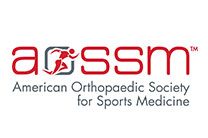
Groin injuries are common among athletes, often resulting from sudden directional changes or intense physical exertion that strain the muscles and tendons in the hip and groin area. When you feel pain in your groin after a sharp movement or stretch, it can be difficult to determine the extent of the injury.
Is it a minor strain, or something more severe, like a tear? Distinguishing between a groin strain and a tear can be challenging, but an accurate diagnosis is essential for effective recovery and long-term mobility. Let’s examine how to identify each injury and manage them for the best possible outcome.
Mild Discomfort: Recognizing a Groin Strain
A groin strain occurs when the muscles in the inner thigh are overstretched or pulled, typically resulting in mild to moderate discomfort. You might experience pain while moving your legs, especially during side-to-side motions, but there may be little to no swelling. A groin strain usually heals with rest, ice, compression, and elevation (RICE).
When Pain Gets Intense: Identifying a Groin Tear
A groin tear, on the other hand, is a more serious injury where the muscle fibers are not only overstretched but also torn. This can range from a partial tear to a complete rupture. A groin tear is characterized by intense pain, swelling, and sometimes bruising. In severe cases, the muscle's function may be compromised, making walking or other movements difficult.
How to Tell the Difference between a Groin Strain & a Groin Tear
The key difference between a groin strain and a groin tear lies in the severity of the symptoms. While both involve pain and discomfort, a groin tear typically causes more severe pain and may come with visible swelling or bruising. If you hear a "pop" or feel a sharp, sudden pain during activity, this may indicate a tear rather than a strain.
Managing Groin Strains and Tears
Effective treatment depends on the severity of the injury but typically starts with rest, ice, compression, and elevation (RICE) to reduce inflammation and pain. Physical therapy follows, focusing on strength, flexibility, and stability to support recovery and prevent recurrence. For more persistent or severe injuries, corticosteroid injections may be recommended to alleviate pain and inflammation. In some cases, minimally invasive surgery. might be needed to repair torn tissues and restore full function.
Understanding whether your groin pain is from a strain or a tear is crucial for selecting the right treatment and preventing further complications. Dr. Srino Bharam, a renowned hip and groin specialist with extensive experience in diagnosing and treating complex athletic injuries, offers a highly personalized approach to each case. With his expertise, you’ll receive a tailored treatment plan designed to accelerate recovery and safeguard long-term mobility. Don’t wait for the pain to worsen—schedule an appointment with Dr. Bharam today to start your journey toward effective relief and recovery.
AUTHOR: Srino Bharam MD, MBA is a board-certified, fellowship-trained sports medicine orthopedic surgeon and professor of orthopedic surgery specializing in the treatment of athletic injuries of the hip and groin. Dr. Bharam has over 20 years of experience in treating injuries and conditions of the hip to restore athletes and patients to an active lifestyle.












